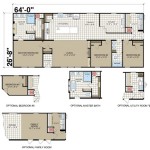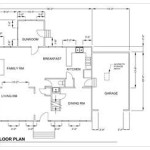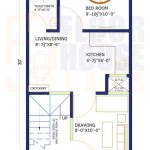How To Create Floor Plans For A House
Creating a floor plan for your home is a crucial step in the design process. A well-designed floor plan can improve the functionality, flow, and overall livability of your home. Here are some tips on how to create floor plans for a house:
1. Determine the Scope and Objectives
Start by defining the scope and objectives of your floor plan. Consider the number of rooms, the size and layout of each room, and the overall purpose of the home. Determine the desired flow of traffic, the placement of windows and doors, and the integration of outdoor spaces.
2. Gather Inspiration and References
Browse through magazines, websites, and home design books to gather inspiration and ideas. Study successful floor plans and analyze their strengths and weaknesses. Collect images and notes that represent your desired style, functionality, and layout.
3. Measure and Draw the Existing Structure
If you are working with an existing home, accurately measure and draw the existing structure. This includes the dimensions of the walls, windows, doors, and any other architectural features. This will serve as the foundation for your new floor plan.
4. Plan the Room Layout
Start by creating a bubble diagram, which is a rough sketch of the rooms and their approximate sizes and placement. Experiment with different layouts until you find one that meets your needs and desires. Consider the adjacencies of rooms, such as the kitchen to the dining room, and the living room to the outdoor patio.
5. Define the Spaces
Once the room layout is established, define the spaces within each room. Draw in the furniture, appliances, and other fixtures. Pay attention to the scale and placement of these elements, ensuring that there is adequate space for movement and comfort.
6. Consider Traffic Flow
The flow of traffic should be smooth and intuitive throughout the home. Avoid creating bottlenecks or awkward transitions between rooms. Plan for wide hallways, clear pathways, and well-placed doorways to facilitate easy movement.
7. Optimize Natural Light and Ventilation
Natural light and ventilation are essential elements in a healthy and comfortable home. Position windows and doors to maximize natural light and create cross-ventilation. Consider the orientation of the home and the surrounding landscape to harness the benefits of passive solar design.
8. Include Structural Details
While not always necessary for initial design, it is important to consider structural details such as load-bearing walls, headers, and beams. These elements define the structural integrity of the home and must be carefully integrated into the floor plan.
9. Review and Refine
Once the floor plan is complete, take a step back and review it carefully. Consider the functionality, flow, and overall aesthetics of the design. Seek feedback from family members, friends, or a professional designer to gather constructive criticism and improve the plan.
10. Professional Consultation
For complex or large-scale projects, consider consulting with a professional architect or interior designer. They have the expertise and experience to create a floor plan that meets your specific requirements and adheres to building codes and regulations.

Floor Plan Creator And Designer Free Easy App

Blender For Noobs 10 How To Create A Simple Floorplan In

Easy To Build Houses And Floor Plans Houseplans Blog Com

Floor Plans Learn How To Design And Plan

Easy To Build Houses And Floor Plans Houseplans Blog Com

Draw Floor Plans With The Roomsketcher App

Easy Home Building Floor Plan Cad Pro

Make Your Own Blueprint How To Draw Floor Plans

House Floor Plans Your Best Guide To Home Layout Ideas

Floor Plans Learn How To Design And Plan








